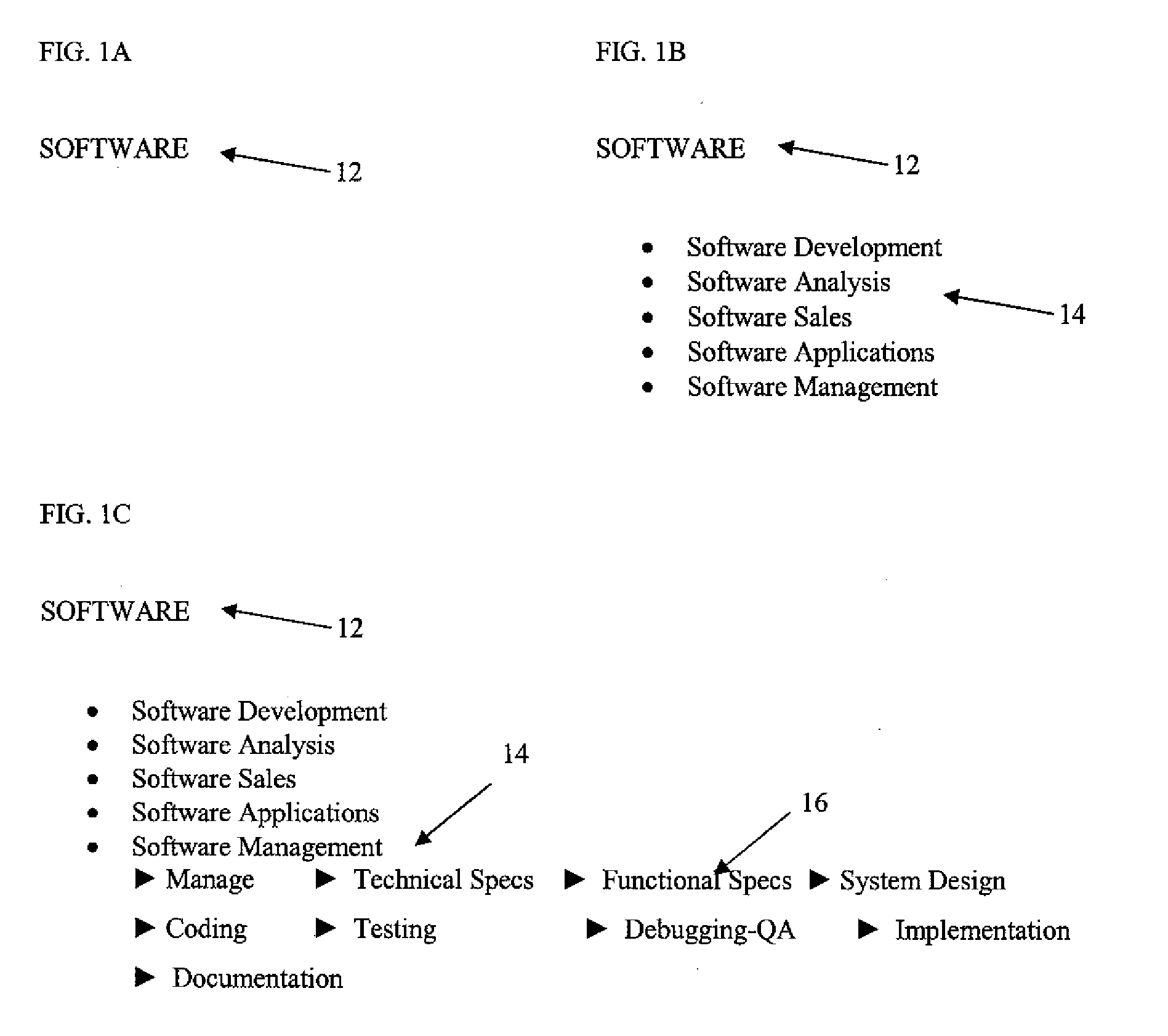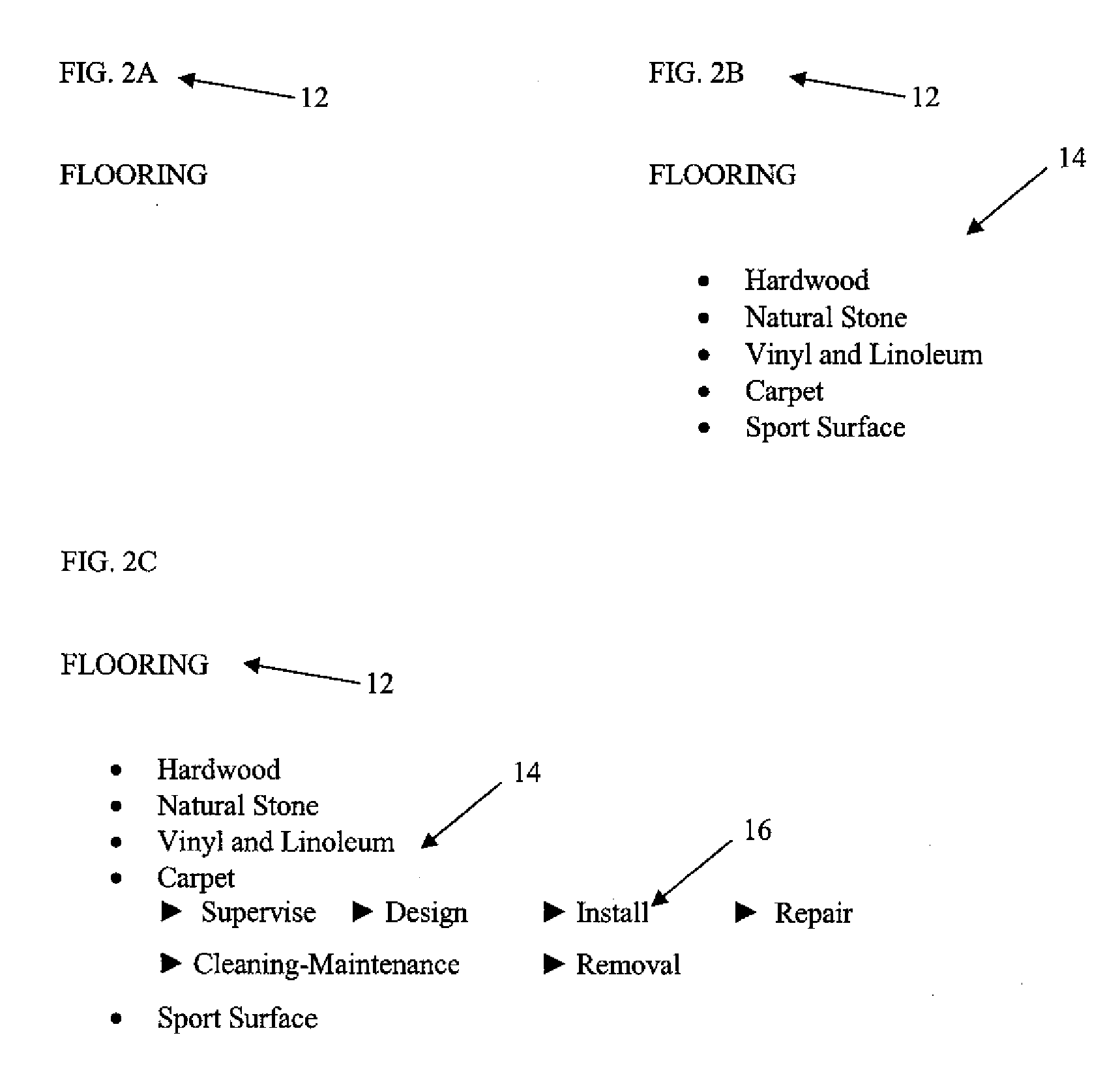Although the agreement-reaching process is natural and time-honored, both consumers and service providers face obstacles in completing this process.
The first obstacle faced by consumers lies in identifying a service provider who can potentially perform the task that the consumer needs to have performed.
Service providers, who may be willing and available to perform the task, but who are unaware of the consumer's need, experience the parallel problem of being unable to make the initial contact with the consumer to begin the negotiation process.
However, these yellow pages listings suffer a number of drawbacks.
First, due to space constraints, many service providers (or advertisers) provide only the name, address and phone number of their businesses, leaving the details of their actual capabilities unknown to the consumer.
This increases the cost to the consumer of contacting and engaging service providers having
skill sets appropriate to the particular task that the consumer needs to have completed, as a consumer will have to call and interview a number of different service providers in order to find out whether those service providers are even able to perform the desired task.
This generally causes problems for both consumers and service providers: Consumers must either limit the number of service providers they contact or spend an inordinate amount of time contacting and interviewing every listed service provider; and service providers run the risk of not being contacted at all, unless they happen to spend additional money to obtain a larger advertising space, where they can spell out their expertise in greater detail.
Part of the problem with yellow pages is the way they are organized.
A service provider may pay an additional fee to
list a number of facts about the provider's business, such as phone number, address and number of years in business, which may be irrelevant to the basic questions: “What needs to be done?” and “Can the service provider do it?” Thus, even if service providers were not discouraged from sharing more about their abilities with consumers by the higher price of acquiring more advertising space in yellow pages, there is no assurance that the information provided by service providers to consumers would actually be helpful in reducing the need of consumers to directly contact numerous service providers to determine the service providers' abilities before even beginning the negotiation process.
However, service providers often are pressured into acquiring larger advertising space, or paying for color advertisements, because to do otherwise would doom them to being buried in the alphabetical listings, where most consumers would fail to notice them.
As mentioned previously, this results in problems for consumers as well as service providers.
Service providers also face the parallel challenges of maintaining a high enough profile for their advertisement that they attract wanted business and fielding inquiries from consumers whose needs do not line up with their abilities.
Unfortunately, those Internet yellow pages services that merely mimic the capabilities of paper media yellow pages still present the problem to consumers and service providers alike that the precise information that would be most relevant to the consumer—whether the advertised service provider can actually do the work that the consumer needs done—may be hidden from the consumer by the larger amount of information provided by the computer.
Consumer-driven Internet solutions, which are basically lists of contractors who have been successfully employed by various consumers, do not solve this problem—and indeed may exacerbate it.
Thus, the consumer would have wasted not only the consumer's time—time which could have been better spent making a more relevant contact—but the service provider's time as well.
While some consumers who contribute reviews to such services might very well provide such information, there is nothing purposive in the structure of such listing services to force them to do so.
Even if they do provide some indication of specific tasks performed by the service provider, they may, and generally do, fail to mention other skills possessed by the service providers.
An analogous difficulty arises between individuals in social networking contexts.
Moreover, keyword searching on these sites can lead to hundreds of “hits”.
Moreover, given the large number of “hits” generated by these search tools, even if an individual succeeds in identifying a person with whom to communicate regarding a particular interest, there may still be a large number of entries remaining, which the individual has not had time or inclination to check.
Thus there is the double
disadvantage to these sites that they may require large amounts of time to search and they may also lead to individuals missing opportunities for social networking that they may have enjoyed had they had a more precise method of identifying others who share their particular interests.
 Login to View More
Login to View More  Login to View More
Login to View More 


